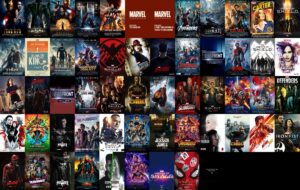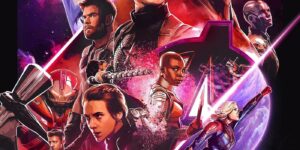In the vast expanse of the Marvel Cinematic Universe (MCU), it’s easy to get caught up in the gravity of household names like Iron Man, Captain America, and Thor. However, beyond the surface level, the MCU has introduced a plethora of unique heroes and villains that have not only captivated audiences but also rewritten the rulebook on what makes a compelling character.

- How Marvel Balances Character Development In Its Latest Movies
- MCU’s Best Ensemble Casts In Recent Films
- The Role Of Technology In MCU’s Latest Blockbusters
- Aerie Collection Was Originally Designed By Iskra
- MCU’s Best Movie Soundtracks Ranked
One such hero is the enigmatic Doctor Strange. Introduced in 2016, Benedict Cumberbatch’s take on the sorcerer supreme proved that magical mysticism could be just as thrilling as high-octane action. With his razor-sharp wit and a healthy dose of arrogance, Strange navigated the uncharted waters of time and space, redefining the traditional notion of a superhero.
On the other end of the spectrum is the lovably grotesque, Abomination. First appearing in 2008’s ‘The Incredible Hulk,’ Emil Blonsky’s transformation into the Abomination is a masterclass in duality. Beneath the gnarled, monstrous exterior lies a tragic figure driven by ambition and a desperate need for validation. This duality not only adds depth to his character but also cements his place as a compelling and formidable foe.
MCU’s foray into uncharted territory also led to the creation of the Guardians of the Galaxy. A motley crew of misfits, this group of intergalactic outcasts embodies the phrase " misfits becoming heroes." From Rocket Raccoon’s hilariously foul mouth to Groot’s…well, "Groot"-ness, this team proves that heroes come in all shapes, sizes, and species.
Their notorious foe, Ronan the Accuser, stands as a shining example of an anti-hero turned full-blown villain. A Kree fanatic consumed by a thirst for destruction, Ronan has deftly etched his name into the cannon of the MCU. His zeal for power, intertwined with his own desolate comprehension of the universe, forges a chilling and convincing narrative.
Tilda Swinton’s enigmatic take on the Ancient One in Doctor Strange furthers this unique exploration. An ancient, non-binary being whose own identity remains an exquisite, ancient enigma. They inhabit the intriguingly blurred realm between good and evil – existing as both an endless deep, ethereal well and an instructor with piercing depth. Within moments of witnessing their introduction to Strange, audiences were left grasped by the Ancient One’s presence onscreen.
As these complex characters take the stage, Ego, the celestial being from the Guardians of the Galaxy Vol. 2, manages to dance effortlessly on the edge between both and villainy. He ultimately blurs all corners between roles. Enacting destruction on astronomical levels due to an acute form of self-perpetuation – existence and the want for validation drives this conflicted superstar of celestial catastrophe. We must explore the boundaries between light and darkness.
Yondu’s tumultuous relationship with Peter Quill comes to define a story arc of conflicted fatherly love, but as they face complicated morality – one finds both sorrow, and depth intertwined across Peter’s upbringing, in an astonishing jumble of contrasts. Yondu, whose enigmatic personality dances on the blurred lines between what forms his morality, embodies, deep within him, a conflicting dance in which guilt wrestles with right – striking our comprehension with every aspect inside another.
From Yondu to the magical mayhem of Doctor Strange, these mavericks prove that in the vast expanse of the MCU, the lines between heroism and villainy are not always black and white.




